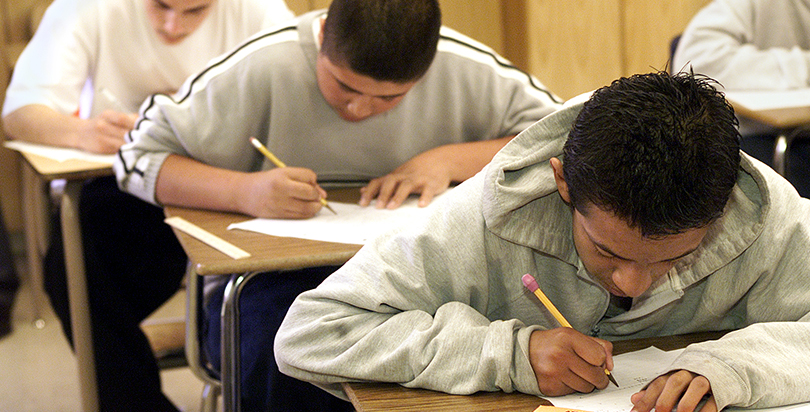A D.C. Breakthrough as Traditional Public School Students Post Gains on PARCC Test, Outperforming Charters

These gains are the largest since D.C. students began taking the exam in 2015, and they are greater than the increases posted by other states in the PARCC consortium. These improvements span schools and socioeconomic groups.
Now, 32 percent of students in traditional public schools in D.C. are on track in reading, and 27 percent are on track in math. Combined, traditional public and charter school students are now 31 percent proficient in reading and 27 percent proficient in math.
“DCPS students made unprecedented progress on the PARCC,” Chancellor Antwan Wilson said in a statement. “This improvement is a clear sign of student learning, our commitment to our young people, and our investment in the programs and curriculum that support the work.”
But there is still a large achievement gap to overcome. White students districtwide scored 82 percent proficient in reading and 76 percent proficient in math, compared with about one-fifth of black students and one-quarter of Latino students.
“Obviously, we still have a lot of work to do to make sure we are closing the achievement gap and that all students are thriving in school,” said DCPS Deputy Chief of Communications Michelle Lerner. “But we’re proud that we have these significant gains because it’s in every side of the city and it’s in every single grade and across every single subgroup.”
Last year, the district’s charter schools posted larger gains than its traditional public schools, but this year, D.C. charter schools saw less than half a percentage point in growth. Altogether, the traditional and charter schools improved 4 percentage points in reading and 2 percentage points in math.
Lerner wouldn’t specifically comment on whether she thought competition from charter schools fueled the score increases in the traditional public schools. She credited factors like the district’s early adoption of Common Core standards and D.C.’s LEAP professional development program for teachers. “Professional development is quite wonky, but this is how you move the needle,” she said.
“Stunned that nobody is pointing out that [D.C. Public Schools] is now on pace w/ charter schools in math and outperforming in ELA on #PARCC,” tweeted Kaya Henderson, former chancellor of DC Public Schools. “Every time charters outpaced [D.C. Public Schools], it was highlighted at the press conference. #DCPS deserves its victory lap. #DCPSRising.”
Stunned that nobody is pointing out that @dcpublicschools is now on pace w/ charter schools in math and outperforming in ELA on #PARCC 1/2
— Kaya Henderson (@HendersonKaya) August 17, 2017
Every time charters outpaced @dcpublicschools, it was highlighted at the press conference. #DCPS deserves its victory lap. #DCPSRising
— Kaya Henderson (@HendersonKaya) August 17, 2017
Going forward, Lerner said D.C. will focus on improving attendance, reducing suspensions through restorative practices, and offering social-emotional support to continue reaching underperforming students.
In the meantime, D.C. educators celebrated the news Thursday.
I am so proud to lead DCPS in a city that invests in the next generation. These gains are a testament to everyone’s hard work. #DCPSRising https://t.co/Sn52vMwFHJ
— Antwan Wilson (@DCPSChancellor) August 17, 2017
Congrats @dcpublicschools students, teachers, principals, and staff on incredible PARCC gains! Up 6.4% ELA and 3.5% math. #DCPARCC2017 pic.twitter.com/ySLzoHqoVh
— Jason Kamras (@JasonKamras) August 17, 2017
.@dcpublicschools that made double gains on #DCPARCC2017! pic.twitter.com/Qhv2VBLJry
— DC State Board of Ed (@DCSBOE) August 17, 2017
Get stories like these delivered straight to your inbox. Sign up for The 74 Newsletter

;)
